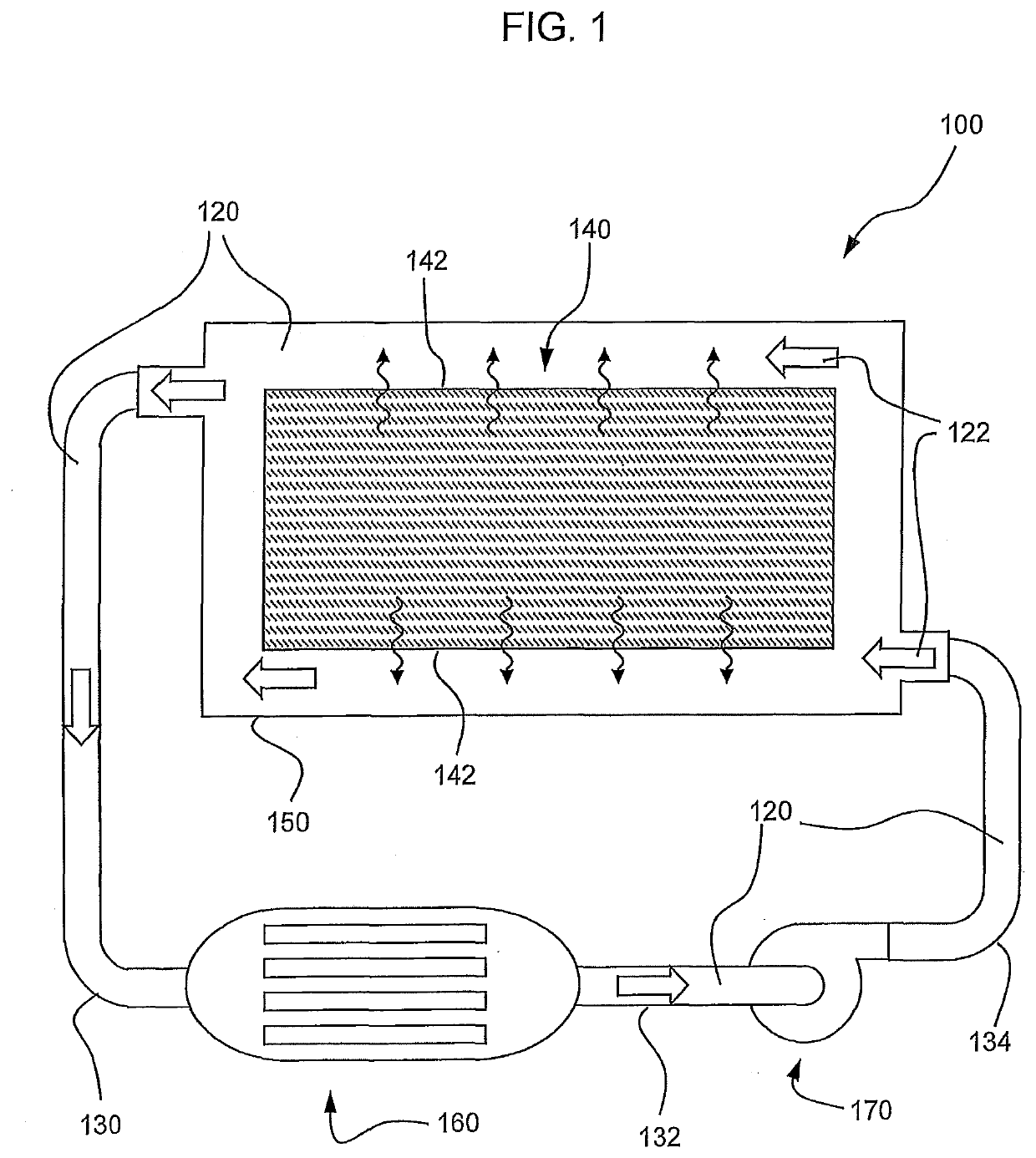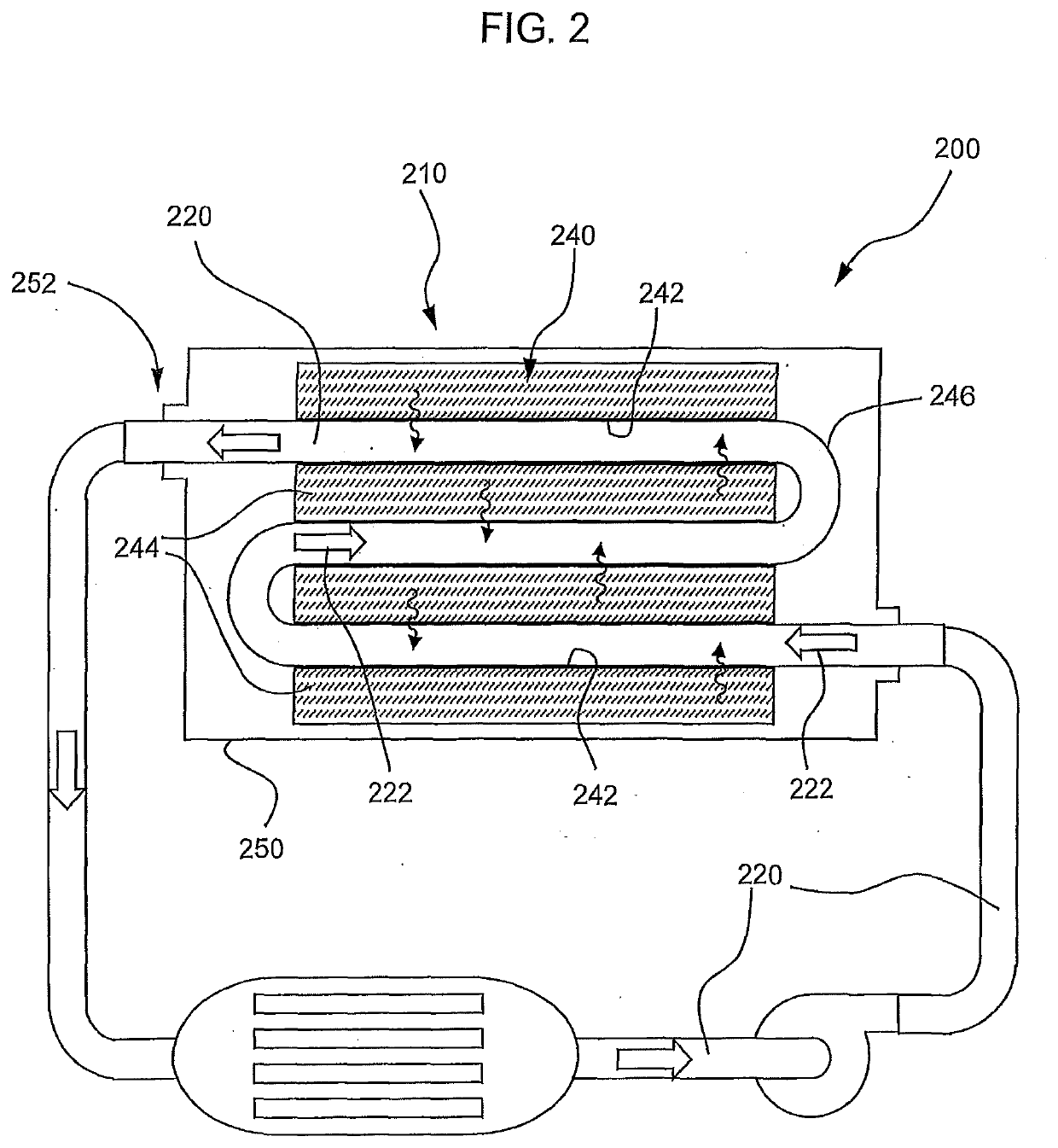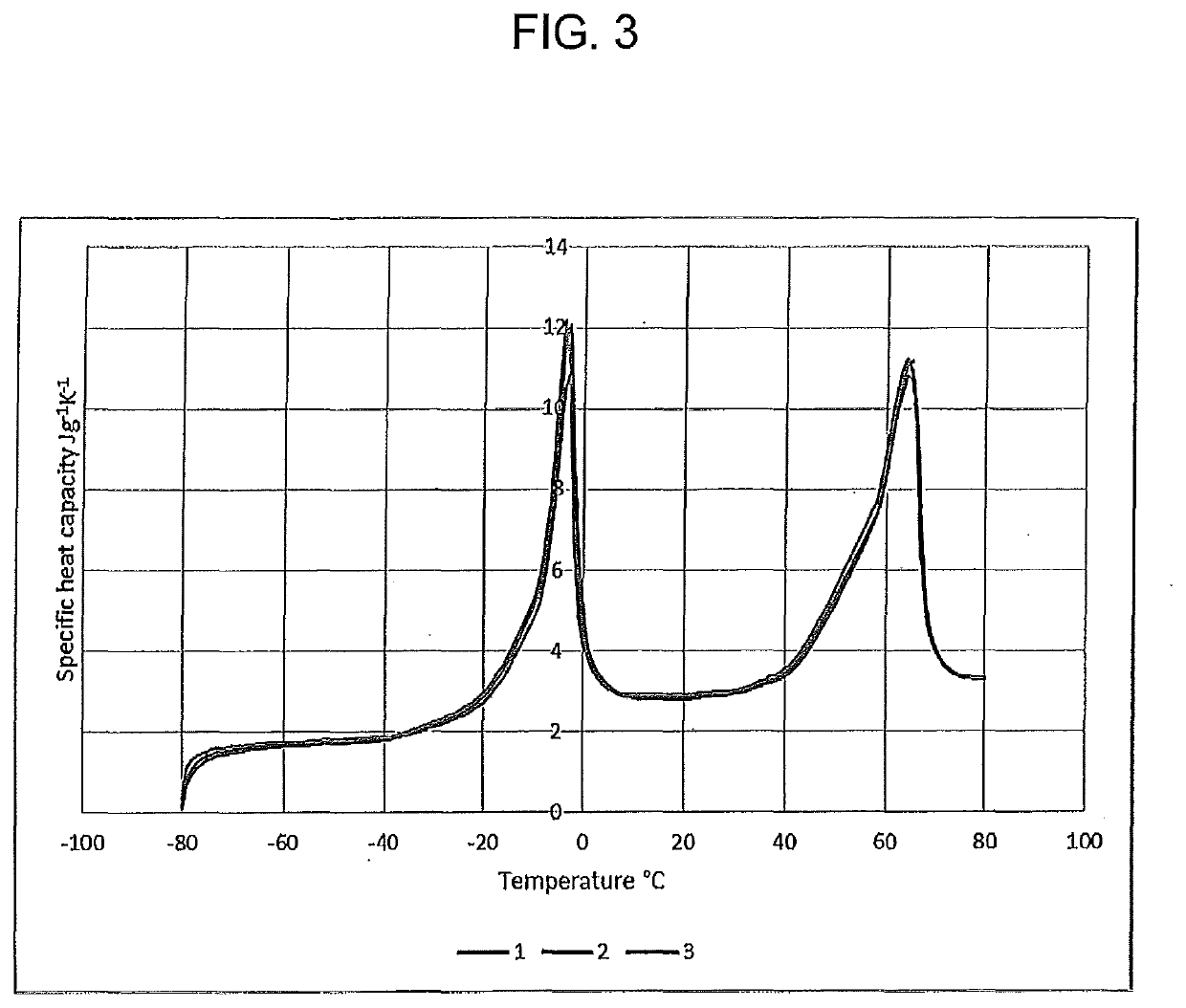Phase Change Material for Heat Exchange Fluid/Coolant
- Summary
- Abstract
- Description
- Claims
- Application Information
AI Technical Summary
Benefits of technology
Problems solved by technology
Method used
Image
Examples
example 1
[0100]The emulsion of the disclosure was prepared by using the above-noted methods. Specifically, 53.9 wt % paraffin wax (Sasolwax, available from Sasol), with a melting point of 64° C., 6.9 wt % emulsifier (Wax Emulsifier 2106 avaialble from Clariant), and 6.9 wt % glycerol were combined in 32.3 wt % water and emulsified. After emulsification, the resultant micelles were analyzed using a Beckman Coulter Laser Diffraction PS Analyzer (LS 13 320) The mean particle size of the micelles in the emulsion was determined to be 0.510 μm, the median particle size was 0.505 μm and the mode particle size was 0.520 μm, with fewer than 10% of particles having a mean diameter of less than 0.415 μm or greater than 0.617 μm.
[0101]FIG. 3 shows the variation of the specific heat capacity of the obtained emulsion from −80° C. to +80° C.; the data of FIG. 3 is also presented in Table 1 below. A spike in heat capacity around 12 J / gK is due to ice from the continuous water phase melting at −8.4° C. (note...
embodiment 1
2. The emulsion of embodiment 1, wherein the micellar size distribution d10 is no less than 50% of d50 and d90 is no more than 150% of d50, or d10 is no less than 60% of d50 and d90 is no more than 140% of d50, or d10 is no less than 70% of d50 and d90 is no more than 130% of d50, or d10 is no less than 75% of d50 and d90 is no more than 125% of d50, or d10 is no less than 80% of d50 and d90 is no more than 120% of d50.
embodiment 2
3. The emulsion of embodiment 2, wherein d50 is in the range of 0.1 μm to 1.5 μm; e.g., 0.1 μm to 1.2 μm, or 0.1 μm to 1.0 μm, or 0.1 μm to 0.5 μm, or 0.1 μm to 0.4 μm, or 0.2 μm to 1 μm, or 0.2 μm to 0.8 μm, or 0.2 μm to 0.6 μm, or 0.2 μm to 0.5 μm, or 0.2 μm to 0.4 μm, or 0.4 μm to 1 μm, or 0.4 μm to 0.8 μm, or 0.4 μm to 0.6 μm, or 0.4 μm to 0.5 μm, or 0.3 μm to 0.5 μm, or 0.35 μm to 0.45 μm.
4. The emulsion of embodiment 1 or 2, wherein the micelles have a mean diameter in the range 0.1 μm to 1 μm; e.g., about 0.1 μm to about 0.8 μm, or about 0.1 μm to about 0.6 μm, or about 0.1 μm to about 0.5 μm, or about 0.1 μm to about 0.4 μm, or about 0.2 μm to about 1 μm, or about 0.2 μm to about 0.8 μm, or about 0.2 μm to about 0.6 μm, or about 0.2 μm to about 0.5 μm, or about 0.2 μm to about 0.4 μm, or about 0.4 μm to about 1 μm, or about 0.4 μm to about 0.8 μm, or about 0.4 μm to about 0.6 μm, or about 0.4 μm to about 0.5 μm, or about 0.3 μm to about 0.5 μm, or about 0.35 μm to about 0.45...
PUM
 Login to View More
Login to View More Abstract
Description
Claims
Application Information
 Login to View More
Login to View More - R&D
- Intellectual Property
- Life Sciences
- Materials
- Tech Scout
- Unparalleled Data Quality
- Higher Quality Content
- 60% Fewer Hallucinations
Browse by: Latest US Patents, China's latest patents, Technical Efficacy Thesaurus, Application Domain, Technology Topic, Popular Technical Reports.
© 2025 PatSnap. All rights reserved.Legal|Privacy policy|Modern Slavery Act Transparency Statement|Sitemap|About US| Contact US: help@patsnap.com



